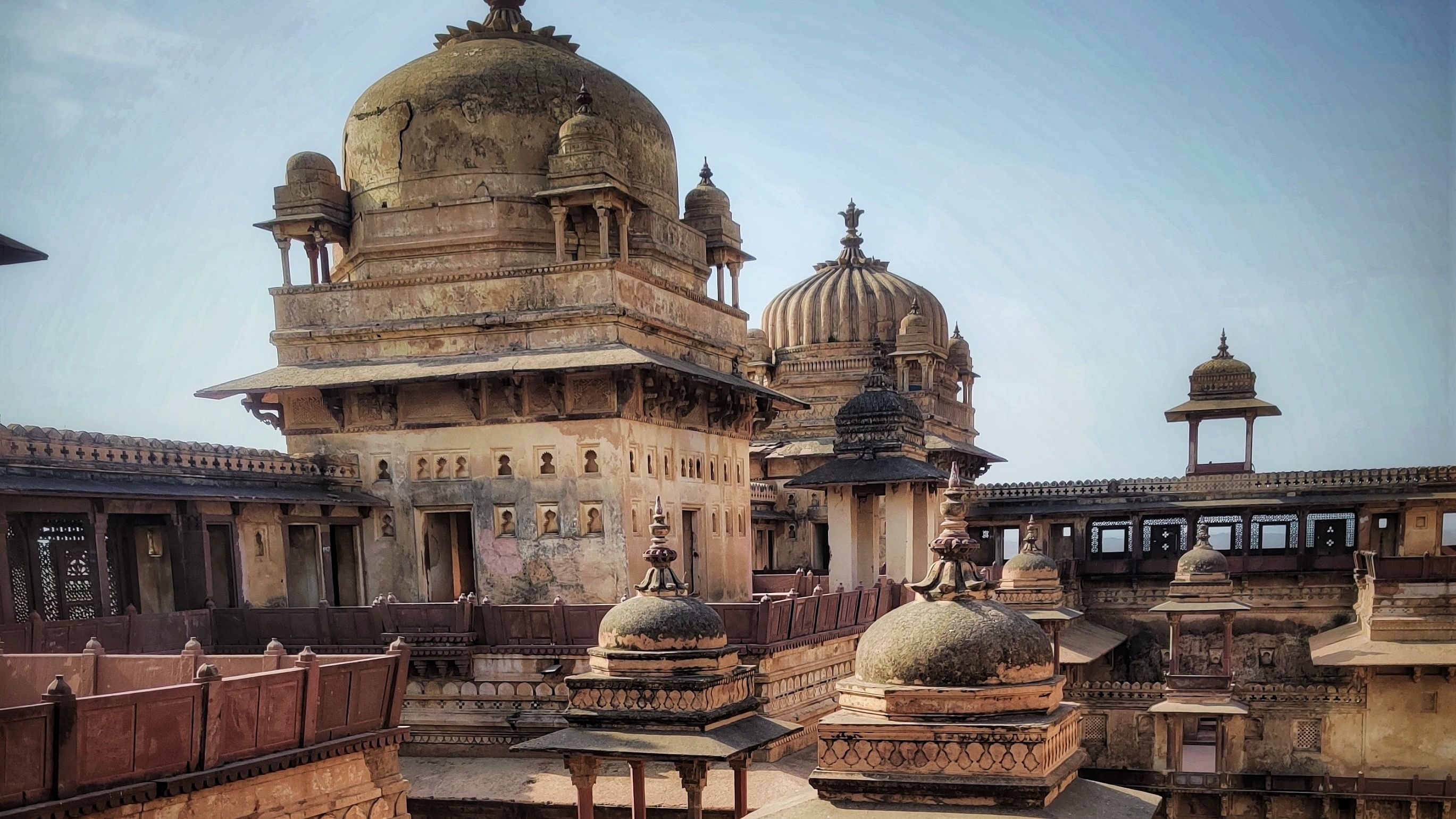
Jahangir Mahal.
Credit: Garima Verma
Recently, UK Prime Minister Rishi Sunak invoked Lord Rama as the ruler nonpareil. “For me, Lord Rama will always be an inspirational figure to face life’s challenges with courage, to govern with humility, and to work selflessly,” he had said.
Ramrajya, after all, is the utopian aspiration for a functioning society.
And, come the seventh month of the Hindu calendar — Ashwin — and India, and many parts of the world, revisit those ideals through ‘Rama’s journey’ (the literal meaning of Ramayana) with the staging of Ramleelas. Orchha leads the way with one of the most authentic representations. For its Raja Ram temple is the only place where he is worshipped as a ruler, as a king — with a daily guard of honour and gun salute.
A fine display of Rama’s journey
Ramleela in this small town of Madhya Pradesh is a puritan’s delight. It is devoid of the heightened Bollywood invasion and the ensuing misguided following at Ayodhya or of politicos often taking over Delhi’s Ramlila Maidan or out-of-place informal language that has crept in elsewhere. The early 20th-century multi-million-selling Radheyshyam Ramayana, by writer and playwright Radheyshyam Kathaavaachak, is used abundantly in ‘Orchha ke Raja Ram ki Leela’.
The wedding celebrations
The day of Rama-Sita’s wedding is the day the whole of Orchha wears an envious celebratory look, as grand as Deepavali, or even more. A magnificent procession — Rama’s baraat, goes around the town, with many of his subjects dancing and singing away on jam-packed roads. The day is the ultimate carnival, and its energy and festivities put every other wedding in history to shame. Armed guards give the groom — king Rama, the salute as soon as he comes out of the temple for the procession, where he is followed by torchbearers, gatekeepers with silver rods, attendants fanning him, and residents performing aartis.
As luck would have it
But, amidst all that, Chaturbhuj temple stands as a silent spectator in a beautifully gloomy background. It was, after all, destined to be the seat of not any other king but King Rama. As per the legend, the King of Orchha Madhukar Shah was a devotee of Lord Krishna, and his wife, Queen Ganesh Kunwari was a devotee of Lord Rama. The king once asked the queen to implode her god to visit Orchha. She travelled to Ayodhya and her prayers were answered. Lord Rama paid her a visit,
agreeing to go with her as an idol. But he had conditions — he shall be the king of Orchha and wherever the queen sat the idol first would be final. Upon learning that the queen was coming back with Lord Rama, Madhukar Shah started getting the magnificent Chaturbhuj temple built. But, as luck would have it, the queen sat the idol in her palace and thereafter, no force could move King Rama from his place. The queen’s palace, hence became Raja Rama temple. The multi-storeyed Chaturbhuj temple, made to resemble the four arms of Lord Vishnu as Rama, is one of his avatars (chatur means four and bhuj means arm), a mix of temple-fort-palace architecture, and one of the tallest spires at 344 feet, was left without a deity. Jahangir Mahal feels similarly ignored. Once upon a time in the early 17th century, Mughal emperor Jahangir was to visit Orchha for the first time. The Bundela ruler, Bir Singh Deo, got the four-storeyed palace built in his honour. The ‘pepper pots and domes’ design of this Indo-Islamic blend of architecture later found its way to Edwin Lutyens’ structures in Delhi. Founded in 1531, Orchha rulers’ (Bundela clan) political affiliations meant that it seldom witnessed fierce battles. Becoming a vassal to the Mughal empire and then entering a treaty of alliance with the British helped it hold a seat of prominence for almost 300 years.
Must see
Laxmi temple: Built by Bir Singh Deo, the murals on the walls and roofs of the temple, are a sight to behold. While some depict tales of various gods and goddesses, some are mythical in nature.
Cenotaphs: Right on the banks of the beautiful Betwa River are the chhatris honouring the ruling family, with curated flower beds and lawns adding colour to a sombre setting.
Jhansi: Just 30 minutes away from Orchha, Jhansi (Uttar Pradesh) also deserves a quick stop for its fort (from where Rani Lakshmibai jumped while riding her horse Baadal during the 1857 battle against the British rule in India); the queen’s palace and more.